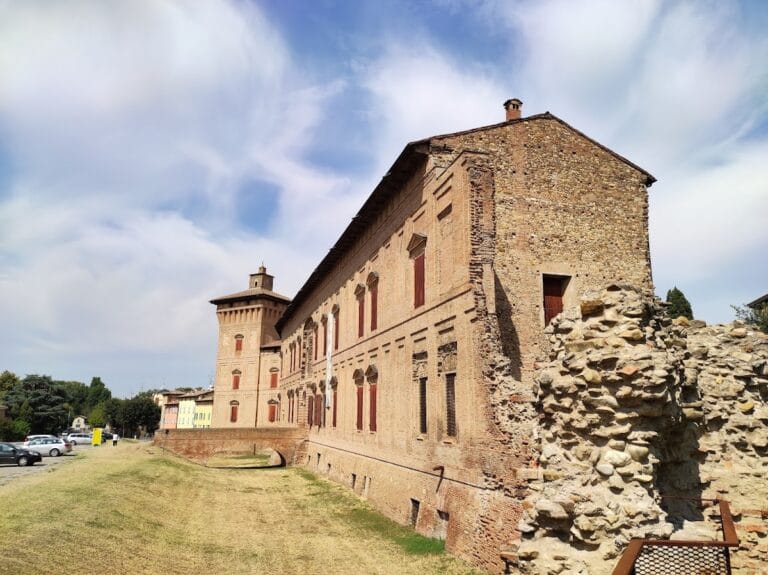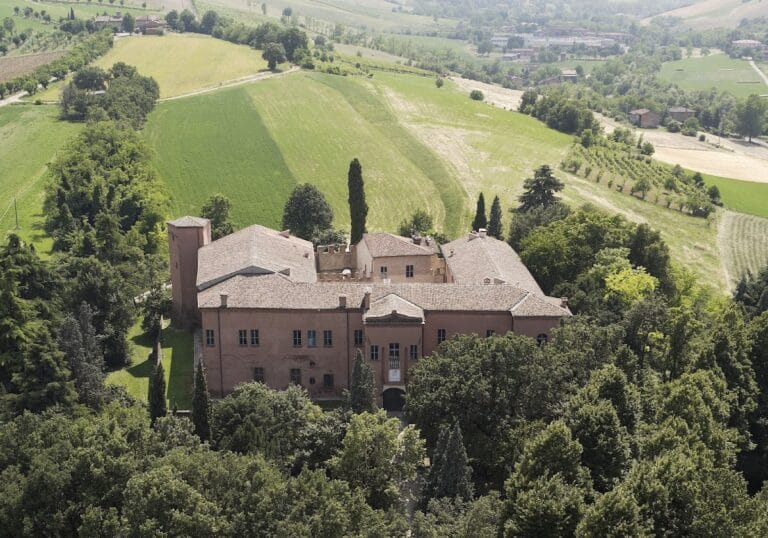Castle of Arceto: A Medieval Fortress in Scandiano, Italy
Visitor Information
Google Rating: 4.5
Popularity: Very Low
Google Maps: View on Google Maps
Country: Italy
Civilization: Unclassified
Remains: Military
History
The Castle of Arceto is situated in Arceto, a district within the municipality of Scandiano in modern-day Italy. This medieval fortress was established in the lowlands and first appeared in historical records toward the end of the 9th century, reflecting its early importance in regional defense and governance.
In 962, the Holy Roman Emperor Otto I granted the castle to the bishops of Reggio Emilia, indicating its strategic and ecclesiastical significance. Over time, the fortress came under the control of the Da Fogliano family, who maintained possession for several generations. In the early 15th century, the Este family, a powerful ruling dynasty in the region, took control of the site. In 1414, they granted the castle to the Boiardo family, who began extensive construction projects, reshaping the structure to suit their needs.
By 1441, Niccolò III d’Este, Marquis of Ferrara, officially invested Bernardina Lambertini with the castle, directing that ownership would then pass to her son, Feltrino Boiardo. Family disputes arose decades later between Matteo Maria Boiardo and Giovanni Boiardo, resulting in the County of Scandiano being divided in 1474. Giovanni received Arceto along with other lands. The division was formally recognized by the Este ducal authorities in 1475 and again in 1490. After the death of Count Camillo Boiardo in 1499, these territories, including Arceto, were consolidated once more under Giovanni Boiardo’s leadership.
The castle changed hands again in 1565 when Ottavio I Thiene, married to Laura Boiardo, assumed control. During their tenure, lasting until 1622, they enhanced the fortress by building a small chapel dedicated to Saint Roch and strengthening the castle’s defenses with new fortifications inside the complex. Following this period, governance returned directly to the Este family between 1622 and 1634 before passing briefly to the Bentivoglio family. In 1643, a cadet branch of the Este family based in Scandiano took possession.
A significant restoration took place in 1740 under Marquis Giovanni Battista de Mari, who made considerable changes to the castle’s structure and added new side buildings to the existing fortification. Eleven years later, in 1751, a grand internal staircase featuring five terracotta statues was installed, marking an 18th-century phase of decorative improvement. In 1777, the castle was inherited by Livia de Mari, married to Marquis Andrea Spinola of Genoa, which brought the property into the Spinola family’s hands. The Spinolas carried titles including Marquis of San Donnino di Liguria, Arceto, and Corticella.
The abolition of feudalism in 1796 led to the Spinola family losing control of the castle, but it was returned to them by a decree during Napoleon’s rule in 1811. Afterward, the property passed into private hands, first sold to a banker named Parodi and later to Flaminio Regnani. Today, ownership is shared in part by the municipality of Scandiano, which holds sections of the castle, including the main floor.
Remains
The Castle of Arceto presents the characteristic layout of a medieval lowland fortress with clear traces of its original defensive features still visible in the site’s plan. Remnants of ancient moats and walls can be discerned, outlining the fortified perimeter that once insulated the complex from surrounding terrain. These earthworks and masonry serve as evidence of the castle’s military function from its earliest documented phase in the 9th century through later modifications.
Within the castle grounds, significant additions date to the period between 1565 and 1622, when Ottavio I Thiene and Laura Boiardo oversaw the construction of a small oratory dedicated to Saint Roch. This sacred space, built to serve spiritual needs within the fortress, reflects the religious patronage typical of noble families of the era. Alongside the chapel, a fortified structure was erected inside the castle, enhancing internal defenses and adapting the complex to evolving military requirements of the late Renaissance period.
Substantial alterations came in the mid-18th century under the direction of Marquis Giovanni Battista de Mari, who undertook a restoration that reshaped the castle’s appearance and layout. This renovation involved building additional lateral wings, expanding the castle’s footprint and introducing architectural elements that reflected the tastes and needs of its time. In 1751, an imposing internal staircase was added, notable for its decoration with five terracotta statues. This ornamental feature represents a marked shift toward aesthetic refinement and suggests a transition from purely military use toward a more residential and representational function.
Today, various facades of the castle remain, offering views of the north, east, south, and west sides, as well as the adjoining park area. While specific measurements are not documented, photographic records indicate a complex with multiple vantage points and landscaped surroundings. The preservation of key structural elements, including portions of defensive walls, the battlemented oratory, and the elaborately decorated staircase, allows the castle to convey both its medieval origins and later adaptations through subsequent centuries.










